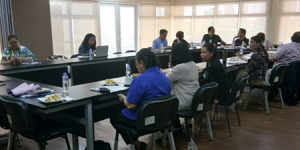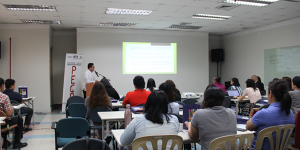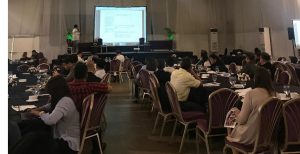 Effective this year, exporters of products under the European Union (EU) Generalized System of Preference (GSP) – are required to be registered to the Registered Exporters System (REX).
Effective this year, exporters of products under the European Union (EU) Generalized System of Preference (GSP) – are required to be registered to the Registered Exporters System (REX).
The system allows exporters to issue self-certifications of the origin of goods to the EU under the GSP Program.
The REX replaces the current system of origin certification based on certificates of origin issued by the Bureau of Customs (BOC).
However, the rules of determining the origin of good in the EU GSP scheme remain unchanged with the application of the REX System.
The global transition period from the current system of origin certification to the REX system started on 01 January 2017 and will last until 30 June 2020.
There are three (3) easy steps for exporters to register in the REX system: (1) The exporter fills in (electronically/ on paper) an application and submits it to the BOC; (2) If the application is complete, BOC encodes it in the REX system, assign a REX number, a registration date and a validity date; and (3) BOC informs the exporter of the registration or non-registration within seven (7) working days after receipt of the complete set of documents by the Export Control Division (ECD) of the BOC.
The following documents are needed to be submitted by the exporter to BOC: latest income tax return, Unique Reference Number (URN) for PEZA locators and Client Profile Registration System (CPRS) for non-PEZA locators, business permit, SEC/DTI registration, list of products applied for authorization to make invoice declaration and product evaluation report.
Exporters who are not manufacturers or producers, must have prior knowledge on how the goods were manufactured or produced and that they comply with the origin rules applied under Annex 22-03 in GSP. Finally, registered exporters shall be notified about the results of the application and shall be assigned with a REX number within seven (7) working days after receipt of the complete set of documents by the ECD. (GTM)

 Entities engaged in the transport of chemicals are reminded to double check and ensure compliance of the application requirements prior to submission to Commission on Elections (COMELEC) in securing the Certificate of Authority to Transport (CA-TT) chemicals. The completeness of documents submitted will lessen if not totally eliminate the chance of denial of application during the gun ban period.
Entities engaged in the transport of chemicals are reminded to double check and ensure compliance of the application requirements prior to submission to Commission on Elections (COMELEC) in securing the Certificate of Authority to Transport (CA-TT) chemicals. The completeness of documents submitted will lessen if not totally eliminate the chance of denial of application during the gun ban period.
 Customs Commissioner Isidro Lapeña announced that the Bureau of Customs (BOC) will create a multi-agency body composed of government agencies and port stakeholders and users that will address issues hounding the private sector.
Customs Commissioner Isidro Lapeña announced that the Bureau of Customs (BOC) will create a multi-agency body composed of government agencies and port stakeholders and users that will address issues hounding the private sector.